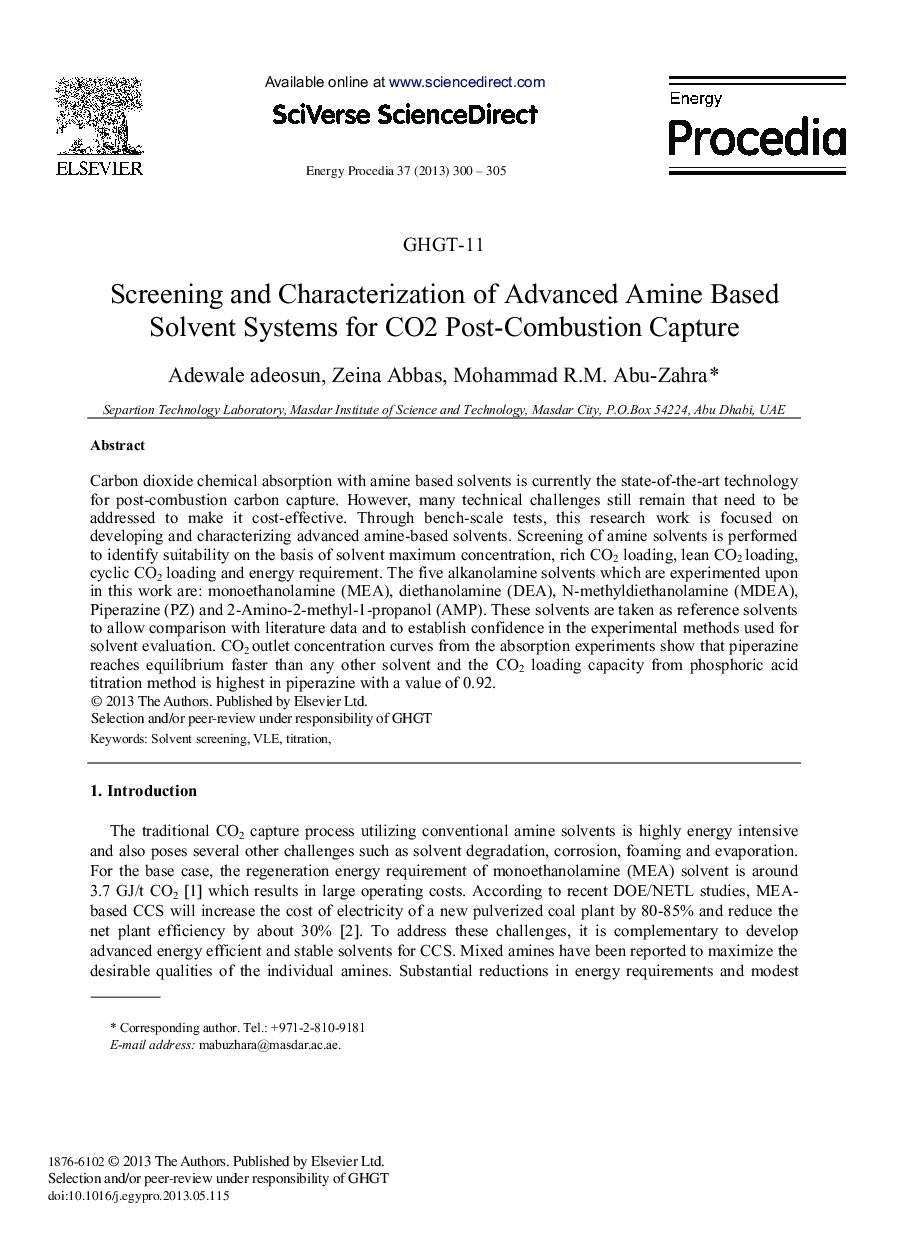| Article ID | Journal | Published Year | Pages | File Type |
|---|---|---|---|---|
| 1512828 | Energy Procedia | 2013 | 6 Pages |
Carbon dioxide chemical absorption with amine based solvents is currently the state-of-the-art technology for post-combustion carbon capture. However, many technical challenges still remain that need to be addressed to make it cost-effective. Through bench-scale tests, this research work is focused on developing and characterizing advanced amine-based solvents. Screening of amine solvents is performed to identify suitability on the basis of solvent maximum concentration, rich CO2 loading, lean CO2 loading, cyclic CO2 loading and energy requirement. The five alkanolamine solvents which are experimented upon in this work are: monoethanolamine (MEA), diethanolamine (DEA), N-methyldiethanolamine (MDEA), Piperazine (PZ) and 2-Amino-2-methyl-1-propanol (AMP). These solvents are taken as reference solvents to allow comparison with literature data and to establish confidence in the experimental methods used for solvent evaluation. CO2 outlet concentration curves from the absorption experiments show that piperazine reaches equilibrium faster than any other solvent and the CO2 loading capacity from phosphoric acid titration method is highest in piperazine with a value of 0.92.
